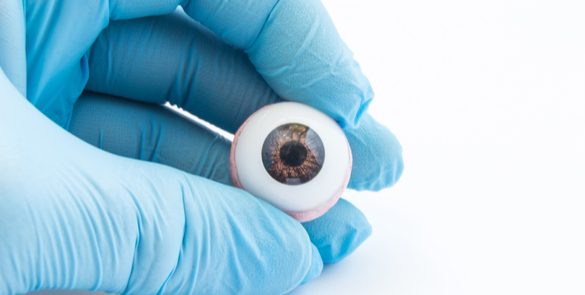Artificial Eye
Enucleation operation is necessary to treat eye cancer whereas Evisceration operation is necessary to treat an eye when it has been damaged through an accident. An enucleation operation is where the eye ball is removed. Evisceration operation is where the inside contents of the eye are removed, leaving the outer shell and the muscles intact. Both operations and orbital implant might be used to enhance orbital volume. After surgery, a temporary transparent plastic shell is put in the eye socket to allow healing and give it shape.
The plastic shell is then replaced with a prosthesis (artificial eye) which is shaped in the form of a large-size contact lens and covers the implanted orbit in the socket of the eye. Instructions on how to remove and clean the artificial eye should be provided.
Complications
Complications are rare but all operations carry some risk and complications such as bleeding, infections and swelling can sometimes occur after surgery. Beyond the operation, irritation of the eye socket, discharge or the ball implant becoming exposed are complications that can affect patients longer term.
Before the operation
Patients are admitted to hospital the day before the operation, to allow time for a variety of tests, including blood, x-rays of the chest and scans. The operation is carried out under general anaesthetic. Once healing of the eye socket is complete, an artificial eye can be fitted on a temporary basis.
Cleaning and maintaining the eye socket, artificial eye and the shell is important and the nursing team will provide instructions on all aspects before the patient goes home. Once outside the hospital patients can keep the eye uncovered to allow faster healing; if the swelling of the eye is a concern, then a pair of sunglasses can be worn.
The shell can sometimes fall out but this is very rare and if it does happen, then the shell should be cleaned carefully, following the hospital’s instructions.
Your artificial eye
It takes about one month to make a permanent artificial eye and in the interim period, a temporary prosthesis is fitted. The permanent artificial eye will give a broad range of movement of the eye.
Patients can live a normal life with an artificial eye, including sleeping with it in place, once the eye socket has healed. This includes wearing make-up, swimming and water sports, although goggles should be worn to make sure the artificial eye cannot fall out and be lost.
After the operation
After surgery, the eye is covered and dressed which is kept in place for a day following the operation.
